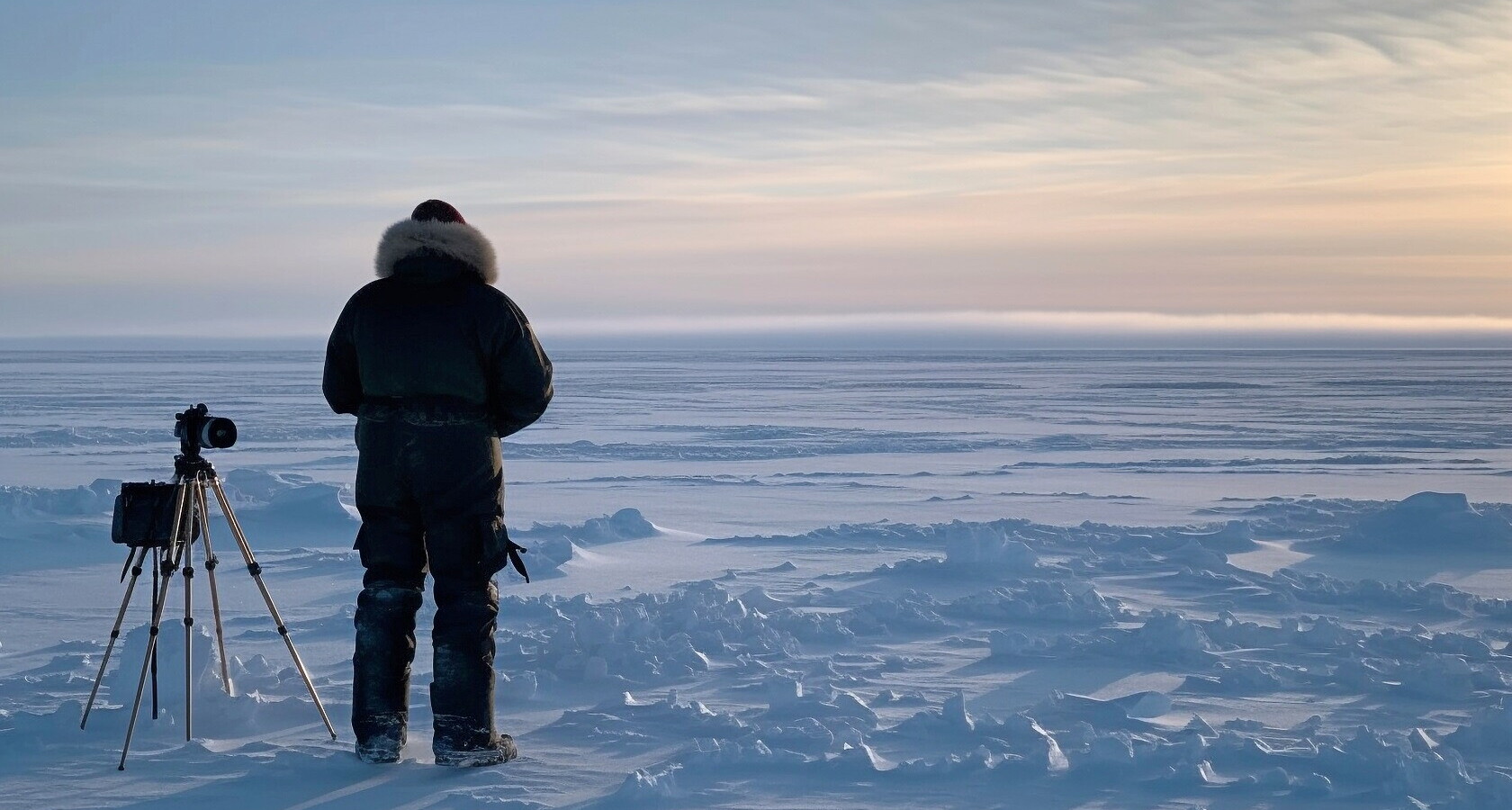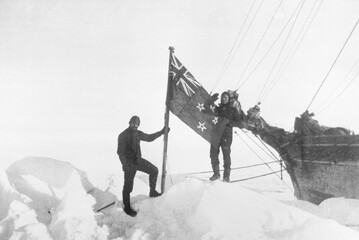
The fate of the Arctic
Legends and power in the high north
From early Russian exploration to US imperial ambitions, the Arctic has been a crossroads of geopolitical strategies. Today, melting ice and access to resources are reigniting rivalries between the great powers, reshaping a new Great Game
15 minW
e like the idea that such an uninhabited, untouched frontier existed out there, a place without history. A part of the planet seemingly frozen in time, hibernating in primordial purity. This vision was born from a longing for elsewhere, from the hope that a different kind of place still remained. A final refuge—Ultima Thule—sheltered from the arrogance of progress. Of course, it was never true. The Arctic was neither empty nor unchanging. Like the rest of the world, it has seen transformations, civilizations rising and falling, invasions, battles, and migrations shaped by shifting climates. But while change has always been part of the Arctic’s story, today it is undergoing a transformation of a different order—faster, deeper, and largely driven by human activity. In my books, based on years of reporting from the field, I call this the New Arctic—or a New-New World, suddenly thrust into the mainstream of global history, much like the Americas after their “discovery.” Many scholars now speak of this as the dawn of the “Arctic Century.”
At a time when the rest of the globe is overcrowded, increasingly desertified, and starved for resources, the Arctic offers a rare and sweeping opportunity: a new ocean—1.5 times the size of the United States—a new region, even a new continent. Sparsely populated, increasingly habitable, and home to roughly 30 percent of the planet’s untapped raw materials. On top of that, the melting ice cap opens up shipping lanes and digital cable routes—shortcuts between East and West. Naturally, the scramble is fierce, the rivalries bitter. And with them, the outlines of future conflict are starting to take shape.
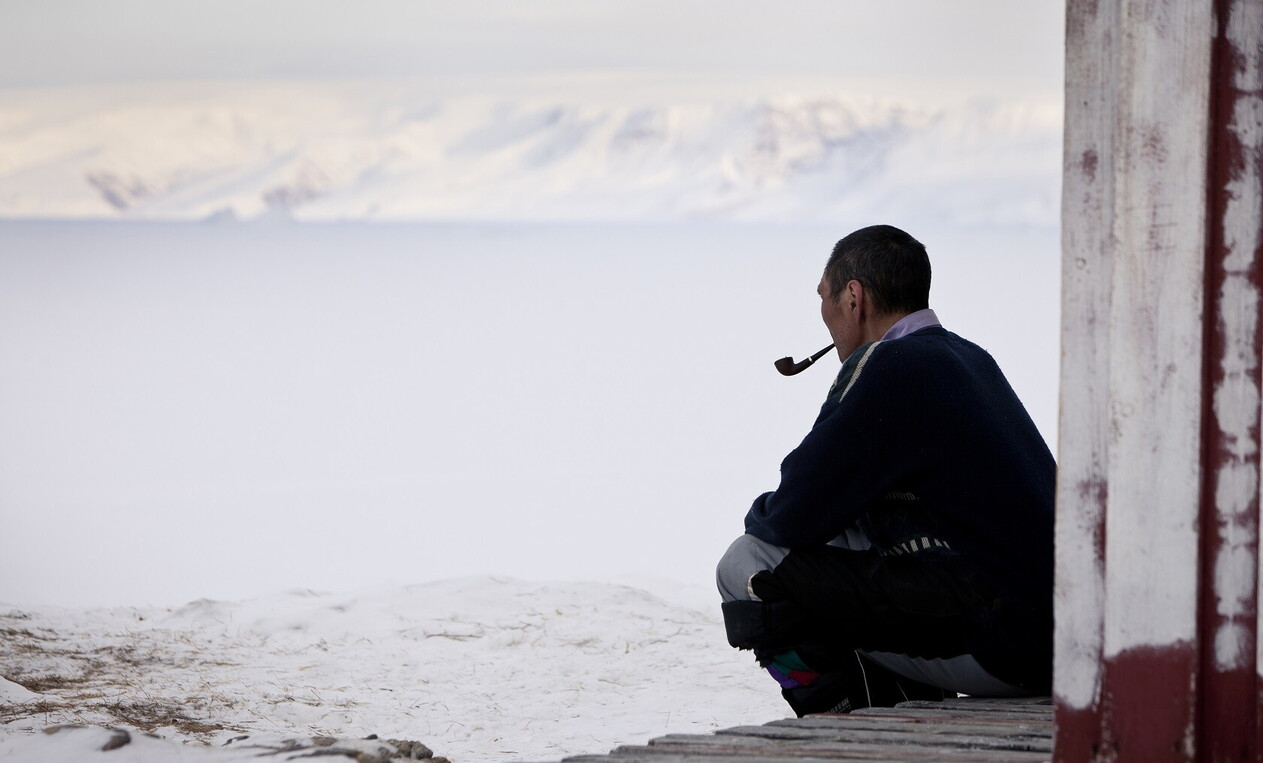
Russia’s White Fever
Russia has not been caught off guard. It is the Arctic’s historical power. The High North has always been its pole star—what Russians call “white fever.” The first recorded expedition dates back to just after the year 1000, launched from the principality of Novgorod toward the Kara Sea. That was the beginning of Russia’s Arctic story, with the rise of the Pomors—former peasants who transformed into Arctic seafarers.
Peter the Great—whose obsession with the Arctic would later be echoed by Stalin and Vladimir Putin—founded the first Northern Fleet in the early 18th century, laying the foundations of Great Russia along the icy coasts. He also established the gulags that Stalin would later expand into a vast system of forced labor. It was the Soviet Arctic that shaped the version we see today: Putin’s center of gravity for military, economic, energy, and ideological power. “It’s his ATM,” a State Department adviser in Washington told me. In the early 2000s, Putin revived Russia’s economy on the back of rising global demand for raw materials, especially Arctic oil and gas, which still account for roughly 50 percent of Russia’s GDP. He also restored Cold War-era defenses, reopening and expanding dozens of military, air, and naval bases.
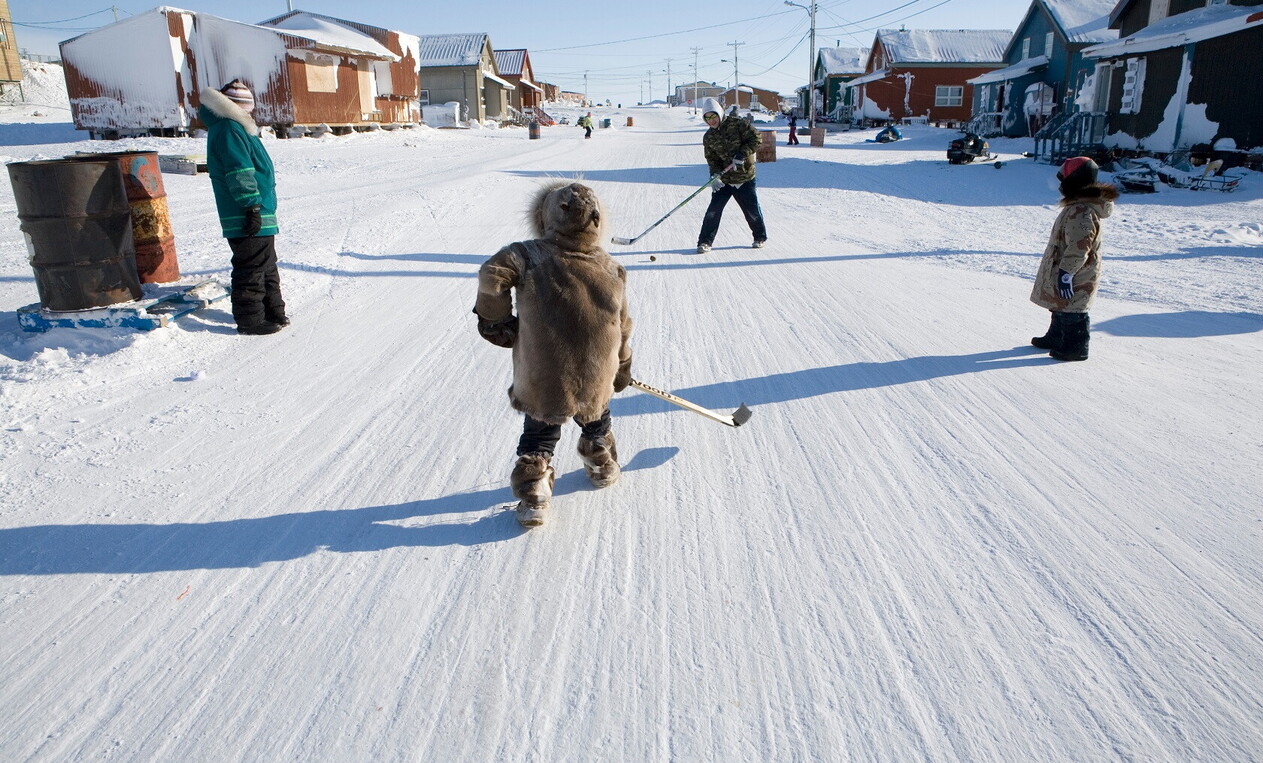
Nearly half of Russia’s more than 6,000 nuclear warheads—and its new generation of hypersonic missiles—are now concentrated in the Murmansk region, between the White Sea and the Kola Peninsula, near Norway and NATO’s northern flank. This makes the Barents Sea, long a zone of strategic friction, arguably the most volatile maritime space in the Arctic today. At the heart of this tension are the Svalbard Islands, whose Norwegian sovereignty is based on a 1926 treaty that now appears increasingly fragile. The archipelago, along with the broader Barents Sea, has been the target of growing Russian provocations and territorial claims—an area where Oslo concentrates not only its oil and fisheries, but also the core of its security strategy.
The European Arctic
Despite its deep polar legacy—made legendary by the explorations of Fridtjof Nansen and Roald Amundsen—Norway only recently began to articulate a formal Arctic doctrine. This shift came in response to Russia’s aggressive militarization in the region. In reaction, Norway has strengthened its partnership with NATO, deepening ties especially with Finland and Sweden, both of which joined the Alliance following Russia’s invasion of Ukraine. So, a European Arctic. One that had its own colonial chapter when Denmark, three centuries ago—eschewing the scramble for Africa—sought dominion instead in the cold, remote High North. Iceland, the Faroe Islands, and Greenland: the largest non-continental island in the world, still accounting for 98 percent of the Kingdom of Denmark’s landmass. Greenland has been an autonomous territory since 1979 and gained the right to self-determination in 2009, yet it remains deeply entangled with Denmark.
A
s the Arctic’s strategic value grows, Denmark faces painful dilemmas. Losing Greenland would mean forfeiting an enormous geopolitical and geological asset—a kind of “northern Congo,” rich in critical minerals. Greenland is what secures Denmark’s seat at the Arctic Council and gives it weight within the European Union. It is only through Denmark that Greenland remains tethered to Europe. But asserting historical rights is fraught. In an era of reckoning with colonial legacies, Denmark must confront a troubling past. The melting ice exposes not just resources, but memories—among them, recent revelations of a campaign by Danish authorities to sterilize Inuit girls up until the 1970s, aimed at lowering birth rates and reducing welfare spending. That history continues to drive many Greenlanders toward full independence, hoping to convert their mineral wealth into a ticket to freedom.
Yet deciding the future of the island’s 57,000 residents is no simple matter—especially in the so-called Arctic Century. And now, after the invasion of Ukraine and the return of Donald Trump to the U.S. presidency, we’ve entered a new era in which territorial ambitions and the law of the strongest are no longer unspoken taboos. Greenland, too, carries another history: the long-standing ambitions of the United States—ambitions that predate Trump’s (for now) merely verbal offensive.
The Aims of the US: an Ancient History
While the United States has wavered in recent years in response to an increasingly assertive Russian and Chinese presence in the Arctic, it has long maintained a strategic outlook toward the region. That began with the 1867 purchase of Alaska from Tsar Alexander II—a deal that would become legendary: two cents per acre, or roughly $125 million in today’s terms, for a territory nearly six times the size of Italy. At the time, President Andrew Johnson was mocked by the press for wasting public money on “ice for his drinks.” But Alaska soon became a land of gold and a massive energy reserve. More importantly, it turned the United States—having just completed its westward expansion to the Pacific—into an Arctic nation. Behind the acquisition was Secretary of State William H. Seward, who saw expansion as a peaceful alternative to war. “It costs much less than waging war,” he wrote. Just a year after purchasing Alaska, he was tasked with surveying the possible purchase of two Danish colonies: Iceland and Greenland. On Greenland, the American envoy Benjamin Peirce reported back that it was a “geological paradise,” rich in cryolite—a mineral then essential for aluminum, which was more valuable than gold at the time. But the Danes’ asking price proved too high.
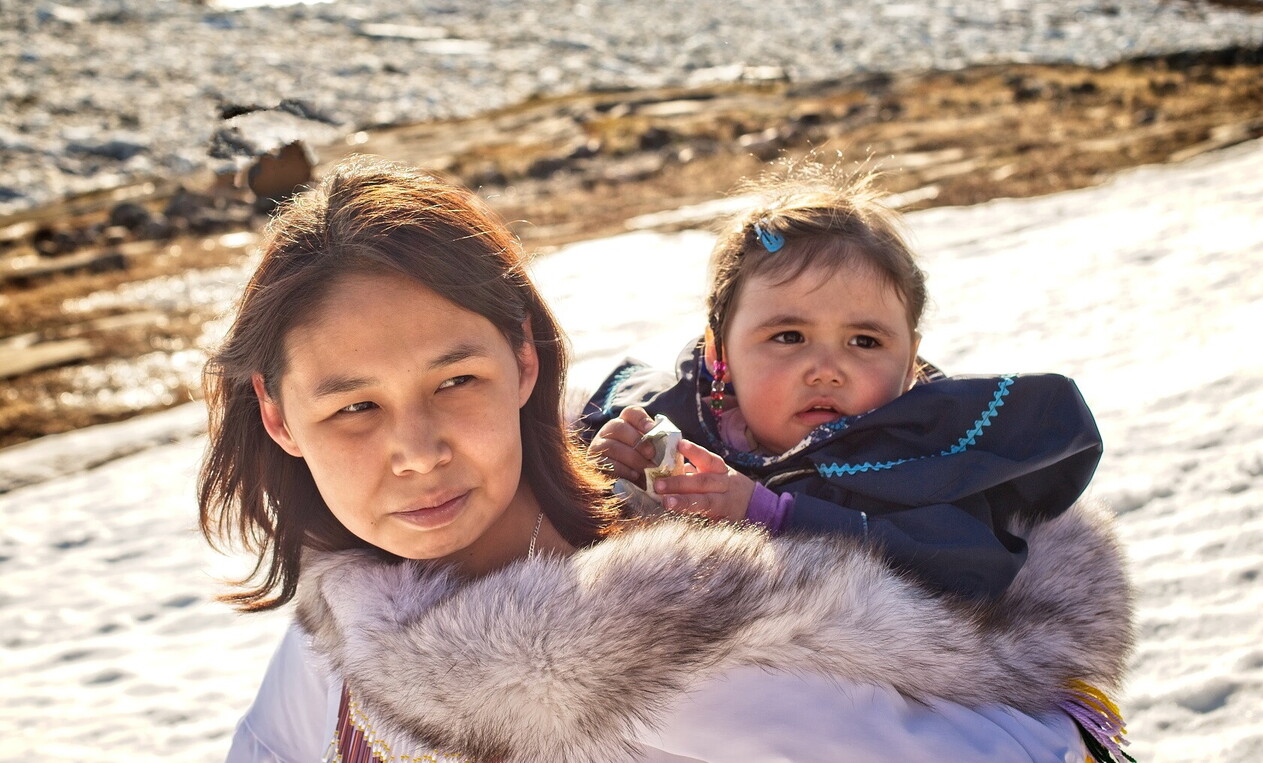
L
ong before Trump’s crude offers, Harry Truman made a serious attempt in 1946, during the early days of the Cold War. He famously pulled an envelope from his Oval Office desk containing a $100 million check for Greenland. Denmark refused. It already understood the island’s hidden value. Still, it agreed to grant the U.S. the right to build military bases and store nuclear warheads beneath the ice cap—concessions made in exchange for nearly cost-free participation in NATO. Since then, Greenland has remained under de facto U.S. military occupation. From the Thule Air Base—just shy of the North Pole—American forces once helped coordinate the capture of Saddam Hussein in Iraq.
Greenland remained a strategic priority under the Biden administration, even if less visibly than during Trump’s tenure. The U.S. opened a diplomatic mission in Nuuk, Greenland’s tiny Inuit capital, and encouraged local authorities to issue exploration licenses to American firms. Mining operations in eastern Greenland are now underway, including rare earth extraction projects backed by companies tied to Bill Gates and Jeff Bezos. In just a few years, the U.S. has successfully pushed China out of Greenland. Washington pressured Denmark to block Chinese-linked companies from gaining mining concessions for rare earths and uranium, and national security concerns were invoked to bar Chinese firms from winning contracts to build two new airports.
“We and the Russians mapped the seabed, But we still only know about 15 percent of that ocean floor. We know much more about the craters on the Moon and the volcanoes on Mars.” U.S. Admiral James Stavridis
Greenland’s value lies not only in its mineral wealth but in its geography. From a top-down view of the globe, it’s clear why the Pentagon sees the island as essential: any Russian missile launched from Murmansk toward the United States would cross directly over Greenland. The island also lies at the intersection of key Arctic sea lanes, including submarine routes that connect the Barents Sea with the North Atlantic. Apart from a few cannonades exchanged between rival whalers—back when whale oil moved markets on the London Stock Exchange—the Polar Ocean has never seen war. True, the Arctic was a key stage for the Cold War, but one where no shots were fired: only silent, high-stakes chases between nuclear submarines, a cat-and-mouse game immortalized in The Hunt for Red October.
“We and the Russians mapped the seabed,” U.S. Admiral James Stavridis, former Supreme Allied Commander in Europe, told me in 2018. “But we still only know about 15 percent of that ocean floor. We know much more about the craters on the Moon and the volcanoes on Mars.” He predicted that the Arctic’s long-standing exceptionality—its unwritten rule against war—was nearing its end. That spirit of restraint was famously expressed by Mikhail Gorbachev in 1987, in a speech delivered before sailors of the Northern Fleet. Speaking not just to them, but also to Ronald Reagan, he called for the removal of medium-range missiles stationed in the Arctic and envisioned a different role for the region: “Let’s make the Pole a hub of peace.” The High North as a sanctuary of cooperation.
The Birth of the Arctic Council
When the Arctic Council was founded in 1996, it was little more than a gesture of goodwill—a forum where the eight polar nations (Russia, the U.S., Canada, Norway, Iceland, Denmark, Sweden, and Finland) could meet to discuss environmental issues, navigation, and the rights of Indigenous peoples. Security was off the table: the Council wasn’t an international organization, but an intergovernmental forum. For years, few paid attention. That changed as the ice receded, revealing vast potential wealth and new shipping lanes that could bypass Suez and Panama. As estimates of Arctic riches began to circulate, so did the arrival of senior officials—foreign ministers like Sergei Lavrov and Hillary Clinton. Countries eager for global influence jostled for observer status in this “Northern Club”—China chief among them, followed by others like Italy.
The spirit Gorbachev once called for—peace and cooperation in the High North—survived even the annexation of Crimea. But it collapsed with the full-scale invasion of Ukraine. Seven of the eight Arctic Council members suspended all cooperation with Russia, which alone controls 52 percent of the Arctic coastline. The region split in two. The taboo of conflict shattered. “High North, high tension” is the new refrain. The entry of Sweden and Finland into NATO has tilted the Arctic Council into a fully Euro-Atlantic body. Meanwhile, Russia’s “no limits” alliance with China has deepened—economically, as Chinese firms replaced sanctioned Western companies in Russia’s Arctic energy projects, and militarily, with joint naval exercises held in the Bering Strait, just off Alaska. Where once the invasion of Ukraine marked the turning point in Arctic geopolitics, we now see another unexpected shift: the emergence of a transactional détente between Trump and Putin. During the Riyadh talks, framed as a first step toward peace in Ukraine, the two sides reportedly placed their mutual interests in Arctic extraction and security squarely on the table. It’s clear now: the redrawing of the global order is underway—and it’s happening in the New Arctic.

